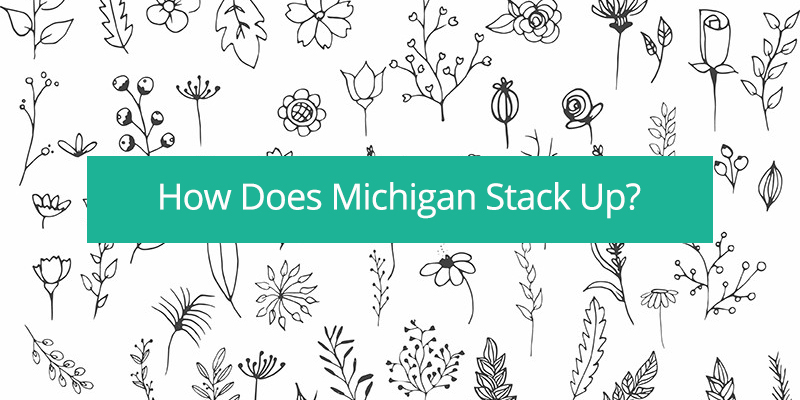How Does Michigan’s Market Compare?
The Michigan market is still young, but it’s already proving to be one of the most unique markets in the nation. We see the dynamics in most of the markets nationwide, and the Michigan press has been asking us how the market stacks up against some of the more mature markets like California, Oregon or Colorado.
We figured you’d like to know how the market stacks up as well. Here are some of our observations to compare from other markets:
- Michigan is uniquely undersupplied of flower
Provisioning Centers know this pain more than any others in the market; in fact, some are only able to stock 2 options for flower in their store.
You don’t see this much (or at all) in other markets, and certainly not in markets creating as much value as Oregon like Michigan is. With only 14% of the flower provided by licensed growers, the market is starved for flower.
Looking at dispensaries (Provisioning Centers) in California, Oregon, Washington, Colorado, Nevada, and others, you will find no less than 10 strain options at the smallest locations, with many boasting as many as 100+ strains available. This is what Michigan can look forward to, but there’s still a long road to get there.
- Pricing and quality consistency is all over the map
It’s difficult to nail down what cannabis wholesales for on average in the US, because every market is pretty different, and many have wild fluctuations in range within the market.
Because supply is so low, Michigan sees a much higher price per pound wholesale than almost all other markets, sitting comfortably between 1500-3000/lb. Because more provisioning centers are coming through the emergency regs, expect that price to continue to slowly creep up over the next 9 months.
Quality in Michigan is very streaky, in large part because of Caregiver supply. With licensed growers buying Caregiver supply to sell, there’s no true consistency in what provisioning centers are acquiring over time. This is quite unique to Michigan.
When you look at other markets, you’ll see a lot of difference by comparison. Colorado, like Michigan, doesn’t have wholesaler licensing available, with most sales happening between producers and dispensaries directly. Prices are ranging in Colorado between $900-1500/lb. Oregon’s pricing is actually around the same range, with most of the sales occurring through Wholesalers.
- Michigan’s equity program
Michigan regulators have stated that they want 50% of the licensees to come through the equity application program. This is a strong declaration and commitment that few markets have addressed; particularly the more mature ones.
California has had an equity program in the regulations for longer, but they haven’t seen much impact. Cities like Los Angeles are starting to add money to the equation, realizing the equity program doesn’t move much forward without money.
Illinois has actually set aside $20M in loans for equity applicants, the most money committed to equity by far. Portland has also decided to take portions of tax revenue to set aside for grants to equity applicants.
While Michigan doesn’t have money set aside, they do reduce fees for licenses which is a small start. Having stated the intent of bringing 50% of the licensees to the table through the program, there is a high likelihood that Michigan will figure out what it takes to accomplish that goal. Like the moon mission in the 60’s, declaration of intent is often the motivator to get the political will in place for success.




